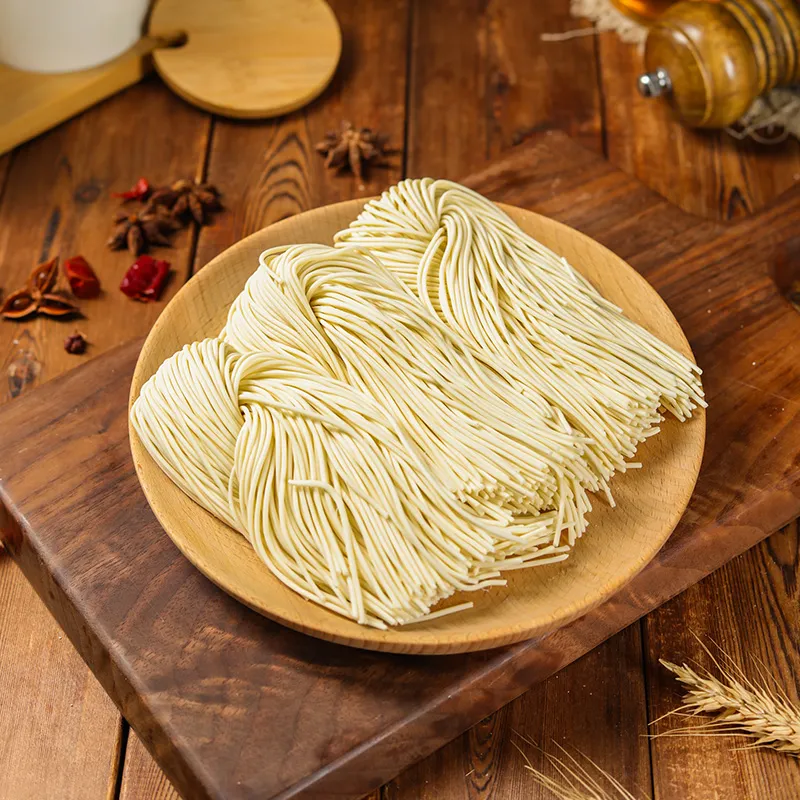Top Nutritious Whole Grain Pasta Options for a Healthy Diet
The Healthiest Whole Grain Pasta A Nutritional Perspective
Pasta has long been a staple food in many cultures, particularly in Italy, where it is celebrated for its versatility and ability to pair with a myriad of flavors. However, in recent years, the focus on health and nutrition has shifted the spotlight toward whole grain pasta as a healthier alternative to traditional refined pasta. This article explores the benefits of whole grain pasta, the various types available, and tips on how to incorporate it into a balanced diet.
What is Whole Grain Pasta?
Whole grain pasta is made from whole grains, which means that the entire grain kernel—the bran, germ, and endosperm—is used in the production process. Unlike traditional pasta, which is typically made from refined wheat flour that has been stripped of the bran and germ, whole grain pasta retains essential nutrients and fiber. The most common grains used in whole grain pasta include whole wheat, brown rice, quinoa, and spelt.
Nutritional Benefits of Whole Grain Pasta
1. Higher Fiber Content One of the most significant advantages of whole grain pasta is its higher fiber content compared to its refined counterparts. Fiber is crucial for digestive health, as it helps to regulate bowel movements and prevent constipation. Additionally, a high-fiber diet can help control appetite by promoting a feeling of fullness, which can aid in weight management.
2. Rich in Nutrients Whole grain pasta is packed with essential nutrients, including B vitamins, iron, magnesium, and antioxidants. These nutrients play vital roles in energy production, metabolism, and overall health. For instance, B vitamins are important for converting food into energy, while magnesium supports muscle and nerve function.
3. Lower Glycemic Index Whole grain pasta has a lower glycemic index (GI) compared to refined pasta. The GI measures how quickly foods raise blood sugar levels. Foods with a lower GI cause a slower, more gradual increase in blood sugar, which can be beneficial for individuals managing diabetes or looking to maintain steady energy levels.
4. Heart Health Incorporating whole grains, including whole grain pasta, into your diet can help lower cholesterol levels and reduce the risk of heart disease. The fiber and antioxidants found in whole grains contribute to cardiovascular health by promoting better cholesterol profiles and reducing inflammation.
Types of Whole Grain Pasta
There is a wide variety of whole grain pasta available in supermarkets today. Here are a few popular options
healthiest whole grain pasta

- Whole Wheat Pasta This is the most common type of whole grain pasta. It has a nutty flavor and a chewy texture, making it a robust alternative to refined pasta.
- Brown Rice Pasta A gluten-free option, brown rice pasta is a great choice for those with gluten sensitivities or celiac disease. It has a mild flavor and can be used in various dishes.
- Quinoa Pasta Made from quinoa flour, this type of pasta is rich in protein and offers a unique taste
. Quinoa pasta is also gluten-free and high in essential amino acids.- Spelt Pasta A lesser-known whole grain, spelt pasta has a slightly sweet and nutty flavor. It is an ancient grain and contains more protein and nutrients compared to regular wheat.
Tips for Incorporating Whole Grain Pasta into Your Diet
1. Start Slowly If you are new to whole grain pasta, consider mixing it with regular pasta at first to help ease the transition. Gradually increase the proportion of whole grain pasta as you become accustomed to the taste and texture.
2. Try Different Shapes Whole grain pasta comes in various shapes, including penne, fusilli, and spaghetti. Experimenting with different shapes can keep mealtime exciting and can complement different sauces and ingredients.
3. Pair with Healthy Ingredients To maximize the health benefits of your meal, pair whole grain pasta with plenty of vegetables, lean proteins, and healthy fats. Consider topping your pasta with sautéed vegetables, grilled chicken, or a drizzle of olive oil for a balanced dish.
4. Watch Your Portions While whole grain pasta is a healthier option, it’s essential to watch your portion sizes. A standard serving size is typically about one cup of cooked pasta.
Conclusion
Whole grain pasta is a nutritious and delicious option for those looking to enhance their diet. With its higher fiber content, rich nutrient profile, and heart health benefits, it stands out as a winner in the world of carbohydrates. By exploring various types and incorporating them into balanced meals, you can enjoy the benefits of whole grain pasta while satisfying your taste buds. Embracing this wholesome alternative not only promotes better health but also contributes to a more vibrant and fulfilling culinary experience.
-
Is Whole Wheat Pasta Healthy?NewsMay.30,2025
-
Are Soba Noodles Good for Weight Loss?NewsMay.30,2025
-
Are Buckwheat Soba Noodles Healthy?NewsMay.30,2025
-
Are Buckwheat Soba Noodles Gluten Free?NewsMay.30,2025
-
Are Buckwheat Noodles Good for You?NewsMay.30,2025
-
A Healthy Way to Savor Soba and Spicy FlavorsNewsMay.30,2025
-
What Are Lanzhou Noodles?NewsMay.30,2025
Browse qua the following product new the we

















































































































